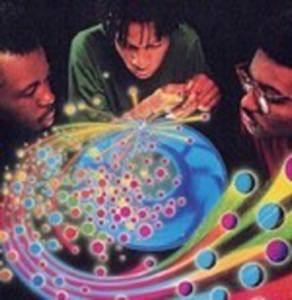Real-time information delivery is fast emerging as one of the most important elements of our online experience. No more waiting for the Pony Express to deliver a parcel cross-country, no more waiting for web services to communicate from one polling instance to another. This is information being available to you at nearly the moment it’s produced, whether you’re watching for it or not.

Just this afternoon, Google declared real-time search to be one of the biggest unsolved challenges it faces. This morning the NYTimes put a link to a new real-time view of all its news stories on the front page of its site. Last night Facebook announced a new feature that will let users be notified instantly when their friends interact with media related to themselves on the site. This is big stuff, but what does it all mean? We offer below a collection of readings on the real-time web. Give these articles some time and you’ll have a solid foundation to understand, discuss and act on this emerging paradigm.
“Instant Messaging” as the Foundation of the Future of the Web
Could Instant Messaging (XMPP) Power the Future of Online Communication?
In January of 2008 we looked at enterprise collaboration suite Jive Software and the company’s belief that the Instant Messaging technology XMPP could serve as a foundation for the future of a real-time web. In that article we explained that just like AJAX has made web pages instantly responsive to clicks, without having to request a whole new web page from the server, an IM-style web could radically speed up collaboration online. If implemented well, it could make for a much more pleasing user experience, too: who would want to go back to a web without the responsive web pages that AJAX has enabled? Jive pointed to a number of examples of companies using the open-source real-time technology XMPP, including Tivo.
See also:
The Man Who Made Gmail Says Real-Time Conversation Is What’s Next
Seesmic + Twhirl Is a Vision of the Web’s Future
Sorry Google, You Missed the Real-Time Web
Experience it for Yourself

Make Google Real-Time With Twitter Search Add-on
The best way to understand the value of real-time information delivery may be to experience it yourself, and one of the easiest ways to do that is with Mark Carey’s “Twitter on Google Search Results Pages” plugin. It’s hot stuff and has honestly changed the way all of us here at ReadWriteWeb use Google more than anything else has in a long time.
See also:
Five Sites That Let You Experience the Real-Time Web Today
FriendFeed Opens the Floodgates with Real-Time Updates
TweetMeme Live: See What’s Big on Twitter Right Now – TweetMeme is one of the most innovative players in real-time technology today and is a must-watch startup.
OneRiot Launches Alternative Twitter Search Engine – OneRiot just starting to do something that Google will no doubt aim to do as well: deep search into links shared across the real-time web (including outside of Twitter). Twitter worked with OneRiot to enable this new product launch.
Surchur Relaunches Their “Dashboard to the Now”
Real-Time News: PubSub Gets Ready for a Comeback
Big Picture: What It All Means for Our Future
Faster – Why Constant Stress Is Part of Our Future
In April 2008, ReadWriteWeb guest author Alex Iskold examined why the real-time web is inevitable and what it means for all of us. Just another of Alex’s many mind-expanding articles over the years.
See also:
Three Models of Value in the Real-Time Web – Our discussion of how the real-time web will be leveraged by individuals and web services.
Baynote: Does Focusing on Real-Time Behavior Trump Amazon’s Technology? – Recommendation engine Baynote believes it can move the economic needle with its real-time technology.
Other Resources Off-Site
We’ve written about the real-time web a lot, but these are some of our favorite resources written by other people.
Le Web ’09 – this year’s theme is… the real-time web. So watch that space.
Activity Streams Discussion Group – Though not explicitly focused on real time, this community movement to build a standard data format for delivering user activity streams from site to site is very related.
Mining the Thought Stream – Erick Schonfeld discusses the huge potential of sentiment tracking and topic search from real-time streams like Twitter. If you enjoy that, you might enjoy our post written two weeks earlier, How a Facebook Sentiment Engine Could be Huge.
Those are some of our favorite resources on this important topic. We’d love to learn about more from readers. Good luck to us all in the coming real-time web!
Title photo: Listen to BREAKING ATOMS on KZSC, Creative Commons by Flickr user Heart of Oak.










